|
With in-person author events still on hold indefinitely, I'm devoting one blog post each month to an author interview. This month's interview is with Janet Glaser, who writes as J.Q. Rose. Her mysteries, Deadly Undertaking, Terror on Sunshine Boulevard and Dangerous Sanctuary, released by Books We Love Publishing, offer readers chills, giggles, and quirky characters. After presenting workshops on Writing Your Life Story for several years, Janet decided to take her advice and pen her memoir, Arranging a Dream: A Memoir. The book is scheduled for release January 1, 2021, also from Books We Love Publishing. Arranging a Dream tells the story of how Janet and husband Ted, budding entrepreneurs with more enthusiasm than experience, purchased a floral shop and greenhouses in 1975, where they planned to grow their dream. Leaving friends and family behind in Illinois and losing the security of two paychecks, they transplanted themselves, their one-year-old daughter, and all their belongings to Fremont, Michigan, where they knew no one. Through trials and triumphs, Janet and Ted dug in to develop a blooming business while juggling parenting with work and keeping their marriage thriving. To celebrate the Arranging a Dream: A Memoir Winter Virtual Book Tour, Janet is offering a free eBook to a lucky reader. Just leave a comment below to be entered in the drawing. Deadline for entries: Sunday, December 20, 9 pm Eastern Time. How is writing about real people, places, and events different from writing fiction, where you can invent characters, situations, and settings? Are the two processes similar in any ways?
In the acknowledgments, you mention that you and your husband Ted had fun recalling the times you write about in this memoir. Tell us more about how your memories meshed and how you reconciled differences when your memories of a specific event didn’t match.
What other techniques did you use to access the memories that helped you tell this story?
What do you hope readers will take away from Arranging a Dream? What did you gain by writing the book? I hope readers will be inspired to work toward their dreams. Use their passion to keep driving toward the future they envision. Looking through the lens of time allowed me to put myself into the shoes of the previous owners of the flower shop, Hattie and Frank. After owning the business for so many years and deciding to sell it, I discovered I was like Hattie. We disagreed a lot with Hattie about how to run the shop and greenhouses because we wanted to use our new ideas and not listen to the tried-and-true methods she had developed during her years of experience. She was afraid we would fail by being so bold. I never thought I would admit I acted like Hattie when we sold our shop. I was also fearful the new owners would fail if they didn’t follow our ways of running things. Instead, they have been successful and are still in business. In addition to your own writing, you’re committed to helping others tell stories from their lives, through your Facebook group, your interactive journal, Your Words, Your Life Story: A Journal for Sharing Memories, and your workshops. Why is this important to you, and what are the rewards?
What’s next? Are there other periods of your life that might lend themselves to a memoir? Or will you write more fiction? Next, I hope to turn the book, Your Words, Your Life Story, into a course so I can reach more people and encourage them to write their stories, because I am a life storytelling evangelist. I always have ideas for stories swirling through my brain, so I will be writing, but I have not chosen which idea to develop at this time. I am just savoring touring around cyberspace, meeting authors and readers. Anything else you'd like to add? Thank you, Nan, for hosting me during the Arranging a Dream: A Memoir Winter Virtual Book Tour!
16 Comments
With most in-person author events still on hold indefinitely, I'm devoting one blog post each month to an author interview. Today's guest is Donald Levin, author of seven mysteries in the Martin Preuss series, as well as the novel The House of Grins (1992) and two books of poetry, In Praise of Old Photographs (2005) and New Year’s Tangerine (2007). The latest book in the Martin Preuss series, In the House of Night, officially launches Tuesday, October 6. You have published six books in the past nine years, with a seventh due out soon. What writing (and other) habits contribute to your productivity?
My experience taught me that if you’re going to be a writer, you need to approach it as a profession. You can’t sit and wait for inspiration, any more than a surgeon can wait to be inspired before performing an operation. You have to make yourself write, even if you don't feel like it. Inspiration and creativity come from writing, not the other way around. Once I started as a serious creative writer—producing novels, short stories, and poetry—I transferred that workmanlike attitude and those work habits that I developed. So when I’m working on a novel, I make sure I’m at work at the same time every day, and put in a full day of writing with a quota of 1,000 words. I’m very fortunate that I was able to retire from teaching five years ago so I have been able to devote a lot of time to writing. But even before I retired, I made time to write while working full-time. It can be done. According to your website, you have worked as a warehouseman, theatre manager, advertising copywriter, scriptwriter, video producer, and political speechwriter as well as professor and dean at Marygrove College. How does this varied work background serve you as an author?
And second, I get bored easily (the polite way of saying the same thing is, I have always been intellectually restless) so I’ve always wanted to be as versatile as possible. This not only helped me find work because I could do a lot of different things, but having all those different kinds of jobs kept me learning new things and figuring out how to explain them to other people. That’s one of the things I most love about writing: I’m constantly learning new things. Your Martin Preuss series is set in Ferndale, Michigan. How important is setting to your stories, and what made you choose Ferndale?
I chose Ferndale mostly as a matter of convenience: I live there. When I want to scout locations, I can just walk around to soak up the sights and sounds. I like to say that people can walk around with any of my books in their hands and see where the locations are. There’s also another reason why I chose Ferndale: one of my favorite writers is Henning Mankell, who set his mystery series in Ystad, a small city in Sweden. As it happens, Ferndale is almost exactly the same size as Ystad, so I feel like I’m making an homage to Mankell by giving my detective a beat similar to Mankell’s Wallander. What goes into creating a fictional character for a series? Are there any differences with creating a main character for a stand-alone novel?
So when I started the first Preuss novel, I had planned (or hoped, I should say) that it would be part of a continuing series. As I’ve written the books, Preuss has sort of unfolded himself to me as a character, and I’ve gotten to know him better and better—and my readers have, too. Another important aspect of writing the Preuss series for me and my readers is Preuss’s son, Toby. Toby is multiply handicapped and lives in a group home, but he is an integral part of Preuss’s life. Indeed, the relationship between Toby and his father is, in my humble opinion, at the heart of the series. Martin Preuss loves his son fiercely and cares for him with great tenderness, and Toby returns the love unconditionally. One reviewer called their relationship “a touching element that’s a constant in the series”; another reviewer noted, “The complexity of the main character and especially his deep love for his handicapped son draw the reader into the story in a way that few other mysteries do.” Toby has profound physical and cognitive disabilities, but the character is sweet, loving, joyful, and everybody’s favorite character in the books. (Also one of the few rounded, sympathetic portraits of handicapped characters I’ve seen.) Toby is based on my own grandson Jamie, who sadly passed away a few years ago; writing him as a continuing character in this continuing series gives me a chance to keep that wonderful young man alive for me and everyone who knew him. What would you like HeartWood readers to know about your mystery series and especially the soon-to-be-released In the House of Night?
Each book uses its crimes as a starting point for examining larger crimes and more significant social issues. The latest book, In the House of Night, perhaps most overtly deals with contemporary social and political concerns. The book emerged from my growing concern with the spread of white nationalism in this country. Set in 2013, the book looks at how the white nationalist movement began to edge into the mainstream of American culture. Here's the story: When the police investigation into the murder of a retired history professor stalls, friends of the dead man plead with PI Martin Preuss to find out what happened. The twisting trail leads him across metropolitan Detroit, from a peace fellowship center, a Buddhist temple, and a sprawling homeless encampment into a treacherous world of long-buried family secrets where the anguished relations between parents and children clash with the gathering storm of white supremacist terrorism. You typically divide your time between Michigan and Florida. Do your writing habits and routines change with a change of location?
Have you found it harder or easier to write during the COVID-19 pandemic? How has COVID-19 affected the way you interact with readers? As I mentioned in the last question, the pandemic quarantine made me rearrange my writing schedule a bit. And it’s played havoc in connecting with readers in books fairs and exhibits . . . they’ve all been cancelled this year. It’s made me rethink how I connect with readers. I always hold book launch parties for each new book with music, refreshments, readings, and so on. This year, out of concern for bringing people together, I’m organizing a virtual book launch for In the House of Night. It’ll be on my Facebook page (and Youtube, if I can figure out how to do it) on Tuesday, October 6, from 7 till 8 p.m. All writers have to deal with discouragement and doubt at times. How have you dealt with those negative emotions?
This writing life must not be for me, I decided. I’m just not good enough. Don’t have what it takes. So I gave up writing fiction. It was painful, even devastating. I had failed at the one thing I had wanted to do since I was little. But I still thought I had some chops as a writer, just not a fiction writer; I had already had several writing jobs, as I mentioned previously. I turned away from literature entirely; I turned away from reading. Instead I became the professional writer I described in my response to your first question. And I did well in that world. It came to pass that the writing I was doing for others relit that little holy pilot light. I started thinking about returning to fiction, and about writing under my own name. About the importance of stories in our lives. About the need to do it. In the gap between my fleeing from imaginative writing and returning to it—a ten year gap—I grappled with what success as a writer really meant, and more importantly what it wasn’t. I met editors, and became an editor myself, and realized how capricious and unpredictable the process really is. With the confidence I had gained, and with what I had learned about writing, I came through that decade of despair by learning that the writing itself and the changed qualities of mind and heart that accompany writing really are more important than the approval suggested by acceptance by others. As if that insight broke some self-imposed spell, in the years since I’ve published eight novels (seven in the Martin Preuss mystery series), two novellas, two books of poetry, a handful of stories, and dozens of poems in print and online journals. That voice shouting in your ear, the voice a friend of mine personifies as “Sid”—Self-Inflicted Doubts—never goes away. But with practice and wisdom, you can silence it long enough to get some good work done. And in the end, that’s really all that matters. Anything else you’d like to add? Many thanks for some great questions! I appreciate the opportunity to appear here. Find Donald Levin and his work here:
Website: www.donaldlevin.com Blog: www.donaldlevin.wordpress.com Amazon author page: https://amzn.to/32y8bLw Twitter: @donald_levin Instagram: Donald_levin_author Facebook: https://www.facebook.com/Donald-Levin-Author-121197194659672 These challenging times can be both stimulating and stifling to creative types. Some writers and artists I know have found comfort in their work; others have been unable to summon their muses and have turned to other activities for solace. I say, whatever works! These times are exceptional, and as I recently read in an article a friend sent me, “During this extraordinary time, we have to realize that everyone now has an additional part-time job that might be called Citizen of the Covid-19 Pandemic,” and we need to give ourselves credit for the time and energy that extra work takes.  Gail Howarth Gail Howarth One artist who's managed to do inspired and inspiring creative work while coping with the pandemic is photographer Gail Howarth. Regular readers of HeartWood may remember seeing Gail featured here a couple of years ago. At that time, she was working on a photography/writing project with Mel Trotter Ministries, a Grand Rapids nonprofit organization that works with homeless people. Now, she is once again combining photography and writing to call attention to today's pressing issues, which include but are not limited to COVID-19, essential workers, race and racism, and LGBTQIA community concerns. What led you to undertake this project? City Center Arts in Muskegon offered me the opportunity to be the featured artist there from September 1 to October 10. The gallery has been very supportive of me, my nature and landscape photography, as well as another project I am working on called The Gratitude Project By Lakehouse Photo. Originally we were going to feature The Gratitude Project. However, the rest of the exhibit will honor essential workers. We felt that gratitude, while a worthy topic, might seem insensitive to those that have sacrificed so much. We thought about postponing the featured artist wall or displaying my landscapes. But I felt like we were missing the opportunity to do something meaningful. The year 2020 has been challenging. The pandemic, racial tension and rioting, and a divide that grows deeper daily in our nation weigh heavily on my heart. I just kept thinking, this is a time to heal, not to fight amongst one another. When I proposed A Time To Heal to the folks at City Center Arts, they quickly agreed to the project. Christina once asked herself, Am I Black Enough? Later in life, as she experienced racism in many forms, the answer became clear. Christina expresses her concerns, her anger, and her wisdom by blogging and through dance. How did you find people to participate? Were most readily willing, or did you have to persuade some? I asked everyone I knew if they would participate, and then they asked everyone they knew. I posted requests for participants on my Facebook and Instagram pages and even contacted local social justice organizations. Most of the participants were referred through the gallery or Facebook friends. Of the 17 participants, I knew less than one-third personally. I received a lot of non-responses to emails and phone calls. However, those that expressed an interest in the project showed no hesitation about participating. Everyone felt like it was an important project and wanted to be involved. Like so many others 2020 grads, Chauncey lost the opportunity to complete his senior year of high school in person and to experience senior prom, skip-day, an actual graduation ceremony, and more. Read more about Chauncey here. How do you think communicating these varied stories and images can promote healing, both for individuals and for our country and world? In a nutshell, we need to get to know one another. The project gives folks from various backgrounds the opportunity to share their journey with people that are generally not a part of their community. Once we find common ground, it will become easier to communicate about and resolve tough issues. One example from the project would be that there has been immeasurable conflict related to wearing a mask to keep COVID-19 from spreading. There are many reasons stated, but I believe the biggest factor is that folks don’t know anyone that has had it, and therefore, it does not seem real. Three of the participants of the project have had COVID-19. Though all three have recovered, they struggle with ongoing health issues. One person caught the virus from a man that did not survive. Another worked in one of the hardest-hit hospitals in the Detroit area. She witnessed countless deaths every day. All three encourage everyone to wear a mask. Once you know someone that has had the virus, you will likely not question whether mask-wearing is right or wrong. Healing begins one person at a time. Hopefully, healing begins with one person, then a second and a third, and multiplies and impacts a whole community, a state, a nation, and beyond. Healing can be hard work and take years. But it can also be quite magical. Have you ever had a rigid belief about a thing and then learn one new fact about it, and it shreds everything you ever believed? I do hope that folks will find a few magical moments from the exhibit and blog posts. I don’t believe my project alone can make a profound change in the world. I do think that projects with the same or similar intentions are popping up all over as a reaction to the dysfunction we are currently experiencing. I hope that collectively change can and will happen. Lastly, I will admit that there was a moment during the early part of the project that I became disillusioned. Not all of my friends or family felt the project had merit. They thought that the result might create greater divisiveness versus the desired outcome of healing. I shared with one of the participants that my heart was a bit broken by the response. I asked her earnestly, what if the only heart opened or healed was my own. Her response was: Well, then the whole project is worth it. I am grateful, and I cherish her words. Working as a respiratory therapist at one of the hospitals hardest hit during the early days of the COVID-19 pandemic, Cindy contracted COVID-19. Now recovering, she asks that everyone wear a mask. In the introduction to “A Time to Heal” on your blog, you write about parallels between the present day and the 1960s. What similarities and differences do you see between the two times? Now and then, social unrest led to demonstrations and rioting. In the ’60s, the issues were related to civil rights, the feminist movement, the Viet Nam War, and the gay liberation movement. Today, we face the same problems and more, but the war we are fighting is with one another. Also, in the ’60s, people still had faith in our government, that our voices would be heard, and that real change could happen. Today, we have lost faith in leadership and our government, that our voices, no matter how loudly we cry, fall on deaf ears, and there is little hope for change. Kwame uses his sense of humor and insight to elevate awareness related to racism and the Black Lives Matter Movement. Kwame believes we are fundamentally bound together and that together we must find a way to get along. In your interviews with this broad spectrum of people, have any common themes emerged? The commonality would be the need or desire of the participant to tell their story or to be heard. All felt that in doing so that it might, in some small way, make a difference. Susan Bishop, MD, is a pediatric doctor. As COVID-19 has significantly changed patient care, she misses children's hugs and unmasked smiles. In an email, you wrote, “The creative process is funny for me. I never have a clear picture of what something will be in the beginning. It just morphs into what it becomes.” In what ways was that true for this project? First, I had no idea if I could pull off this project. I had two months during a pandemic to find people willing to be photographed, to share their stories, and translate them into an exhibit of words and images. Initially, I thought I would display one photograph and a few keywords of each person to convey the story. However, I could not come up with a smart way to show the words. In the end, I decided to label the images more traditionally. Each piece has a name and just a little information about the participant. Hopefully, viewers will become curious enough to read more about the participants on my blog. Then, as I selected and edited photos, I realized that for most participants, a single image left the story incomplete. I began mounting three to five images into a template with a plain white background. The stories were coming together, but still, something was lacking. One day, I accidentally placed one of the photos behind the others. It was fabulous!! I reduced the grayscale of the background image (made it lighter), and it became part of the story. In some cases, I had to backtrack to find and photograph backdrops that would complete the story. Lastly, I initially had a narrow concept of who should participate. The expansion happened naturally and felt right. When Justin learned personal protection equipment was in short supply, he came up with a plan that included renting the second largest cargo plane in the world and having it flown to China, filled with supplies, and flown back to Ohio to begin distribution. He then purchased US-made mask-making equipment and started production in Ohio. How has this project affected you personally? Deeply and on so many levels. There were many days that I felt hopeless. The division between people feels as if it grows larger every day, and I did not feel as though I was working fast enough or hard enough. But I came to believe that I am doing what I can to be a positive force for awareness and change. I will, in some way, continue the work that has begun with this project. I am honored and humbled that complete strangers would take the time to share their life experiences with me. Their words forever change me. The most life-changing aspect of the project is related to racism. I have never considered myself a racist. But, I have become more aware of the cultural bias that I carry with me. I listen with new eyes and ears, and feel with a heart more open. And, as those old untruths pop up, I look them over and toss them away. We have so very much to learn from one another. I am a forever student, and can barely wait for my next teacher. Siena is working toward awareness and social change as a member of the Sunrise Movement, an organization that seeks to remove oppressive and unsustainable systems to create a just future. What is your hope for this project and its impact? I hope that hearts and minds will be changed, that we will become a more unified people, even if we disagree, and as a result, create a better future for our children. That is a pretty big hope, isn’t it! I am not sure if it is realistic at all. But, in the words of John Lennon, “You may say I'm a dreamer, but I am not the only one.” I hope others will be inspired to start projects that promote healing and unity. Pastor Sarah believes it is time to put an end to our differences based upon race, learn to imitate the Kingdom of Heaven, and to live as one. Read more about Pastor Sarah here. A Time To Heal will be on display at City Center Arts from September 1, 2020, until October 10, 2020. Hours are limited, so please check the website before traveling to the gallery. Blog posts related to the participants are located at https://lakehousecc.com/living-at-the-lakehouse/
Not all blog posts related to the project are complete. Consider subscribing to be notified of new posts. With in-person author events still on hold indefinitely, I'm devoting one blog post each month to an author interview. This month's interview is with Sharon Dukett, author of the memoir No Rules. Desperate to escape the stultifying life she saw ahead for herself in the early 1970s, and entranced by the California hippie scene, Sharon ran away from home at sixteen. No Rules details her precarious journey through the counterculture, an experience that would mold her into the strong woman she became. Every teenager who ever lived probably fantasized about running away from home and living on their own, but most of us lacked the courage and motivation to pull it off. What do you think made the difference for you?  Sharon in 1970 Sharon in 1970 I was miserable with the prospect of what was ahead for me if I didn’t go. My mother seemed so unhappy, as did my older sister. Leaving wasn’t just for me. It was as though I was breaking out for them, too, demonstrating it was possible to live a different life. Plus I had my older sister with me when I left, which made me feel protected. The catalyst for that leap was being dumped by my first real boyfriend, which left me feeling empty and hopeless. It took a different kind of courage to decide to share your story—a story that you had kept to yourself for a long time. What gave you that courage? As I read writers like Mary Karr and Cheryl Strayed, I saw that what made their books shine was the honesty. They had great stories, and I knew I had a good story, too. But it would be empty if I didn’t share my deepest thoughts and feelings, good or bad. My success and sense of accomplishment in my career and my personal life as I grew older made me strong enough to share my story regardless of others' reactions. In the Epilogue, you mention that you began writing as a way of healing from unresolved hurts. At what point did the book transition from personal writing to something you wanted to share with others?  It quickly transitioned as I got caught up in the memories of the times. I had always wanted to write a book, but when I was younger I never knew what to write about. Once I began writing about this, I didn’t want to stop. But until I had a personal computer, the idea of using a typewriter was overwhelming. If the personal computer had not been invented, I would have never been able to complete a book. In No Rules, you write honestly about some difficult subjects. What parts of the book were most challenging to write? I found one of the most challenging subjects was writing about falling in love with someone that I later came to despise and recognize as a con artist. I had to recapture the naïve innocence I felt at the time and block out what I knew would come later. It was difficult remembering being attracted to him as he later repulsed me. Were there parts you especially enjoyed writing?  Hitching across Canada Hitching across Canada There were some parts that just flowed out of me like they were already written, and I was just the conduit putting the words on paper. I cried through writing the scene with Cindy after she finds Jesus. And the trip across Canada could have been an entire book alone. It was much longer in the original draft. Reliving those memories were like re-experiencing the trip. What helped you access the memories that form the basis of No Rules?  Venice Beach Venice Beach Because this was such a momentous time of my life, much of this was deeply ingrained in my memory. I even believe I recall some exact dialog. I did write the entire first draft in the 1990’s when it was all fresher in my mind. I have some photographs from the time that I used for reference. For example, I have a group shot of those on the ride from Patterson, NJ to Ohio, and photos of our room at the A-House in Provincetown. I also found the more I wrote, the more the memories would overtake me. When you are writing memoir, you take up residence in that time and place and the images and experiences flood back at you. I also played music I listened to during that era, particularly if it was music I don’t often hear. I loved what you wrote in the Epilogue about the people from that time in your life being your “first tribe.” How did they function in that role?  Yurt building Yurt building Despite some of the bad things that happened, we were all part of a larger community. No matter where you went, you could easily connect with others because they looked like you. I learned so much from all these people because our backgrounds were highly diverse. It didn’t matter what socio-economic, ethnic or religious background you came from—no one cared, and no one typically asked. I don’t think that has ever happened in America before or since. You can’t live through a time like that and not recognize the common humanity in all of us. Once you’ve seen it, you can’t un-see it. In the acknowledgments you say the book is an accumulation of years of work. Take us through your journey from initial idea to publication. How long did you spend writing and revising the book? What avenues did you explore in pursuing publication? How did you come to be published by She Writes Press?
You also mention that you belonged to a writer’s group. What did you find valuable about that experience? Were there any challenges? 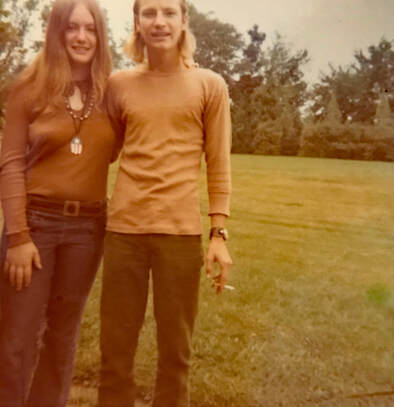 Sharon with Ernie, 1972 Sharon with Ernie, 1972 I spent several years in the writers group. I don’t think I was always open to the input from some of the members, probably because of how it was presented. But generally speaking, even those that came across as being overly critical had truth I could learn from. In time we modified our process for critique so we had to start out with three or more positive comments first before any negative comments. This was better for all of us because writers need positive reinforcement of what works along with knowing what to improve. It was fairly time consuming as there were four or five of us turning in lengthy chapters for review every two weeks. I know my chapters tended to be 7,000 or 8,000 words each. They were all cut a lot when I revised later on. I stayed in that group until I put the work aside in 2000. What do you hope readers will take away from No Rules?  Sharon with her older sister Anne Sharon with her older sister Anne I want readers to experience what it was like to live in those times, and the transformation that came about as a result of discovering feminism and growing my own strength. What did you gain by writing the book? By writing this book, I have completed a goal I had for years, and often wondered if I would ever reach. By doing so, I was able to preserve a unique time in history that no longer exists and will always be part of who I am. What’s next for you as an author? I am currently working on a thriller novel that takes place in the near future when climate science has been declared to be illegal propaganda in the US, and activists are detained and disappear. Anything else you’d like to add? One of the greatest experiences of being a writer that I never expected, particularly now because of social media, are the wonderful writers I have met and connected with online. My new tribe is made up of writers who are supportive of one another and offer support and information. We inspire each other and help one another reach our goals. I have discovered I am once again part of a larger community.
With in-personal author events still on hold indefinitely, I've decided to devote one blog post each month to an author interview. I'm kicking off this new feature today with a Q&A that tells the remarkable story of a young writer's devotion to his grandmother and her literary legacy. For reasons you'll understand as you read on, it wasn't possible to interview Barbara Mahase Rodman, author of the recently published novel Olas Grandes. Instead, this interview is with her grandson David Kuhnlein, who edited and published the book after the long lost manuscript was unearthed. The manuscript for Olas Grandes was stashed in a trunk for about forty years before you found it. Tell us more about how you learned of its existence and managed to locate it. For the most part that’s true: the manuscript sat in her trunk since 1979, full of potential, charging up like a battery. Barbara Mahase Rodman (my grandmother, known by her grandsons as Babbie) got many rejection letters in the 70s and 80s, due to a couple factors, one of which was her animosity towards the editing process. Another was her interest in larger publishing companies. I hadn’t heard of Olas Grandes, or at least I’d forgotten about it, until I read my great grandmother’s autobiography My Mother’s Daughter – a testament to growing up as a strong Indian woman in Trinidad. My mom told me that I was mentioned in the back of the book where Anna Mahase Snr. wrote about the family. So, of course, that’s the first place I looked! Sure enough I found mention of me, but more rewarding was a typo – it said that Babbie had published two books: Love Stories for All Centuries, which I had read, and Olas Grandes. My mom, uncle, and I quickly searched Bab’s house for the manuscript, and hidden in a massive wooden trunk, brimming with so much of her writing, we found it. Did you know right away you wanted to edit and publish the novel? What led to that decision? Well, first I wanted to read it. There’s something incredible about reading a book written by an elder like Babbie who, at the time I found the book, suffered greatly from dementia. The manuscript's weight in my bag became a talisman, and as I walked around with it I felt like I was hanging out with her, aeons ago, in Trinidad. After reading the first few chapters I took a train across the country. I didn’t want to take the only copy of the book on the trip, so I let those early chapters linger in me. I talked to my friends Adam and Katie a lot about the project. Even speaking of the project excited me, and it was in the tangle of conversations -- and questions I asked every reader and writer I encountered -- that I decided something had to be done with this book. At the time, I was writing a series of lyric essays on illness and a recent surgery I’d had. But while writing them felt important, it also made me physically sick. Focusing my energy on transcribing Olas Grandes was a way to keep writing, while also taking a needed break from my own project. Gail Kuhnlein, my mom and Barbara's daughter, is also a writer, and lucky for me she agreed to help edit the book. I couldn't have done it without her. What was Barbara’s reaction when you told her of your intentions? How old was she at that point? Was she able to be involved in the process as you worked on it?  Barbara and David, August 2019, three months before Barbara's passing Barbara and David, August 2019, three months before Barbara's passing Honestly, her reactions depended on the day. In the two years before Barbara passed away, my visits to her house increased, and I began to help informally caretake. Because of her memory, we had certain conversations regarding Olas Grandes over and over again, to the point where I observed patterns and ways to create shortcuts around them. For instance, sometimes she’d tell me that Olas Grandes was not a novel, but a story, and it was already published. So I’d have to preface a conversation about her book by showing her the physical manuscript and explaining that it’s different than her other book. But other times, like magic, she knew exactly what was happening and was thrilled. “Never could I have imagined,” she once told me, “that this darling, darling little boy would be helping me publish my book.” She was 90 when I re-discovered Olas Grandes, and the project took roughly two years to manifest. She was involved peripherally. I would read passages to her that I didn’t understand, either because of her diction or place names, and asked her to explain. Cultural words, fauna, flora, and Trinidadian myths stayed with her, and she usually had no problem giving me details or stories associated with these passages. In the acknowledgments, you say you tried to keep Barbara’s voice intact during the editing process. Being a writer yourself, was that difficult? Did you ever find yourself wanting to impose your own style? It was easier than I thought it’d be. I have a knack for imitating other writers, and have a lot of fun impersonating. I think of it like a painter trying to paint . . . oh anyone, to use a Trinidadian example, M.P. Alladin, by sight. (A more accessible example perhaps is how musicians “cover” other songs, which is not a rip off, but a compliment, a head nod, perhaps even an advertisement.) It’s a fantastic exercise to let go of the ego that writers so often cling to around their work, and this release opens up a unique freedom to explore the architecture of language from a new vantage point. Also, I hadn’t written much fiction yet (that’s changed significantly since then), so perhaps I had a leg up there. The setting in Trinidad plays such a big part in Olas Grandes. What did that place mean to Barbara? Do you know how she came to write Olas Grandes?  Young Barbara at McGill University Young Barbara at McGill University At heart she’s an island girl fortified with the blood of a princess. She was born and raised in Trinidad, where her grandmother Rookubai (a princess escaping an arranged marriage) arrived around 1887, a stowaway on a ship from India. I mention India because many Indians held onto Hindu traditions – celebrating Diwali and the belief in reincarnation – even though Canadian missionaries attempted to convert all the Indians on the island to Christianity. Although Hindu themes are peripheral in Olas Grandes, I think that Barbara’s interest not only in Hindu customs, but also her interest and study in the occult, was nurtured by island life. She called the Caribbean “the perfect background for dreaming.” One of my persistent, and unanswered questions I posed to Barbara, was: who is the character Ma Becky based on? Many of her characters are fictionalizations of family members, usually adorned with pieces of herself. Ma Becky is the only character I could never see clearly with this template. Bab knew some Trinidadian witches when she was growing up, who lived on the beach, but part of me thinks that there’s quite a bit of herself in Ma Becky. Babbie always loved fairy tales, fables, and myths, partly because of their appeal to both children and adults. She stayed rooted to the Caribbean landscape because it’s where she spent her youth. She had also recently and tragically lost her son, David Rodman, in 1977, just a couple years before writing Olas Grandes. I think that writing the book was a way for her to enter an alternate reality, in which Davey was a young boy again, and she was living in an idyllic gothic romance in her home country, but that’s just a guess. Did working on Barbara’s novel give you any new insights into her life?
Barbara was able to see the book in print before the end of her life, wasn’t she? What was that like – for her and for you? 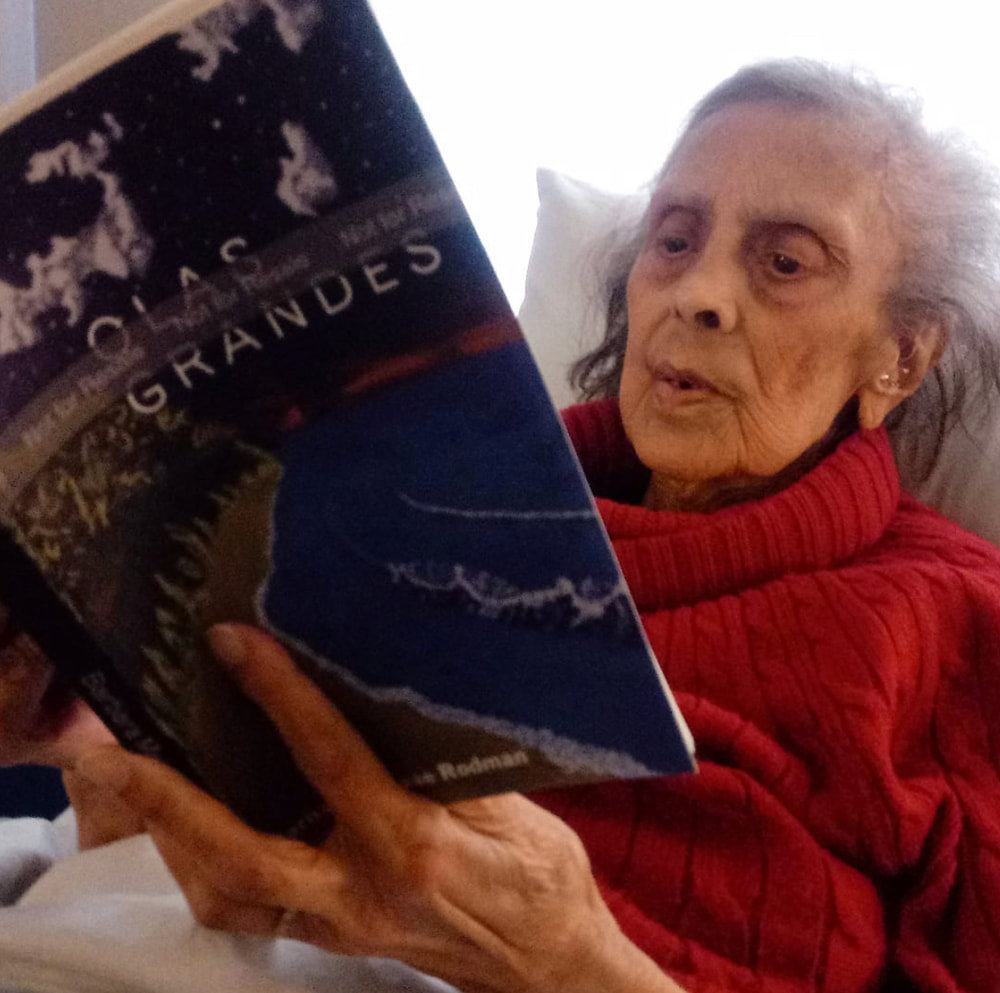 Barbara holds a review copy of her novel Barbara holds a review copy of her novel The review copy for her book arrived twelve days before she died. The same night we got the first full box of Olas Grandes copies was the night she passed away. Seeing her hold the book and flip through it was an incredible moment of this journey. With people still reading and buying and reviewing her book, that journey continues. Between my mom and me, we read Babbie about seven chapters before she died. She didn’t remember writing the book, but at the end of each chapter she'd say, “I like this story, keep reading.” Usually when I'd read her the Detroit News she’d get burnt out listening about half-way through an article. Not so with Olas Grandes. I can only imagine what went on in her mind, listening to her grandson and daughter read words to her that she wrote some forty years ago. There was some magic there for all of us. Your uncle Ken created the stunning cover art. Was the cover design a collaborative process, or did you give him carte blanche?  The book cover The book cover My uncle Ken and I sat at the kitchen table for hours, discussing the project. When we decided that we were going to independently publish the book for temporal reasons, as well as “sweet romance” not being as salable as some of the more hardcore stuff in the romance marketplace, we decided that he’d paint the cover. I gave him some ideas, and we read some passages from the book aloud to give us a sense of voice and place. But Ken was born in Sangre Grande, so he knew what the coastline looks like better than I do! One funny thing about the painting was that he started painting these tiny waves, but since olas grandes translates to “big waves”, my mom suggested making the breakers a little bigger. It was a Homer Simpson moment, I think he even smacked his forehead, “D’oh!”. Barbara’s bio says she also wrote Love Stories for All Centuries. Can you say more about that? She also contributed to the Detroit News Sunday magazine. What kinds of thing did she write for the magazine?  The cover of Barbara's first book The cover of Barbara's first book Love Stories is a magical little book weaving together love stories across three continents, the common thread plucked from a dreamlike vapor, the mist of eternity on which every story’s loomed. It’s her first book, published in 1985 by the International University Press and printed in an underground style. I’m biased but I think it’s an exceptional project. She mingles famous love stories with her own; lovers meet in and out of dream worlds, recognizing one another by their eyes, and it’s all built on the history of Trinidad, India, and Spain – her spiritual home. Babbie would say to me, “I don’t believe in reincarnation. It’s not something I have to believe in because I know that I’ve lived another life in Spain.” Reading her books and articles in the Detroit Sunday News Magazine, which used to come folded inside the Sunday edition of the Detroit News, it’s clear that for Barbara, death was not a barrier but a reprieve. She concludes one of her many articles by writing, “I am a dreamer living in my own world of dreams. I hate reality, but Life is reality, therefore I compromise and leave my dreams alone for a while, as long as Life lasts. After Life, I can have my dreams and all the things I love all to myself.” She wrote emotional pieces, like this one, but she also contributed silly articles. In one of my favorites, she talks about each item from “Twelve Days of Christmas” – partridge, pear tree, drummers, rings, etc. – and adds up their price, telling the beloved what to do with her gifts. Which ones to keep, which to donate to a local bird sanctuary (there are a lot of birds) and what she should now think of her “true love” after he heaps these excessive gifts into her lap. “I don’t know about you,” she writes, “but I’d be happy with a single gold ring.” I see from the Olas Grandes Facebook page that you’ve been matching proceeds from sales and donating to worthy causes. What went into your decision to do that, and how’s it going? This entire project revolves around a sense of duty. Not only to my grandmother, or our family, although that’s a large part of it, but there was also something more elusive, and larger. I have a few practices I perform religiously. One is writing. Another is listening. Longstanding systemic health and social inequities disproportionately affect Black people in the US – and the coronavirus pandemic is highlighting that fact. It’s important to know where our money’s going. The decision to donate to Detroit Will Breathe is just one way to support the amazing anti-racist work being done right now, as people continue to march, and people continue to buy. Do you have any other writing or editing projects in the works? I just finished my first novella – it’s a work of literary fiction about the notorious Austro-Hungarian vampire Béla Kiss. I’m still waiting to hear back from a few of my favorite small presses. I’m also continuing to write flash fiction, film reviews, and poems. Much of my own recent writing is forthcoming or published in online lit journals, and easily found if interested. (davidkuhnlein.wordpress.com) Also, sitting in my “to-do” pile are three more of Babbie’s full length manuscripts, two of which I’ve read, and are fantastic. I’m not promising anything, but if they get transcribed and edited, I’ll update the Olas Grandes fans on our Instagram, which I’m most active on @olasgrandesnovel. Anything else you’d like to add? I absolutely love your blog, Nan, and I’m so honored. Babbie would have been ecstatic. Thank you, from all of us, for the interview.
In this week’s blog, you’ll meet Mark Andrews, one of my favorite West Michigan photographers. Born and raised in Newaygo County, Mark got the travel bug early in life on trips with his family. He went on to work in the travel industry, for airlines and tour companies, including a stint in Barbados. “I started with photography in the 80s with an old film camera and fell in love with taking pictures,” says Mark. “I worked for Kodak in the early 2000s as a sales rep selling digital cameras and had some training over the years with them. Most of what I’ve learned has been over the internet and practice, practice . . . ” Mark is especially fond of photographing places that evoke a sense of the past – Cuba and old Route 66, for example. 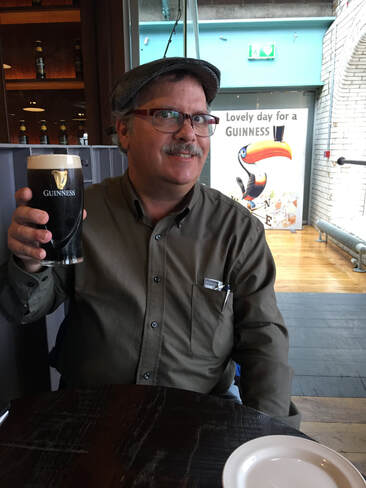 In addition, he has visited and photographed Iceland, Ireland, Scotland, Greece, Turkey, China, Russia, Philippines, Mexico, much of old Route 66, Hawaii, and National Parks including Grand Tetons, Yellowstone, Yosemite, Arches, Grand Canyon, Zion, Great Smoky Mountains, Canyon Lands, and Monument Valley. Where hasn’t he been, you might ask. Well, still on his list are the Amazon, Ecuador, Israel, Italy, Spain, Lisbon, “and a whole lot more.” In this post, Mark shares tips for taking better travel photographs, as well as advice on finding travel deals to your dream destinations. Tips for Taking Better Travel Photos |
| Author Lene Fogelberg is visiting today to share some tips for kick-starting a sluggish creative engine. You may remember meeting Lene (pronounced LEN-ay) when she visited HeartWood more than a year ago to talk about writing, health, and her memoir, Beautiful Affliction. |
Lene's Ten Creativity Boosters
| Lately, I have been thinking about creativity, especially since I recently experienced a surge in inspiration after returning from our holiday in Sydney, Australia. Even before I had recovered from jet lag, new ideas for writing projects kept popping up into my mind. I felt compelled to examine this process further, by pondering how, why and when I have experienced bursts of creativity in my life. |
Attend to Your Health
| Our health has a great impact on all aspects of life, creativity included, but I also know from experience that doing something creative can be a great source of comfort and even alleviate pain. Since this post is about boosting creativity, the first step would be to do what we can to feel healthy and well-rested. But, as I told you, in the midst of jetlag and general post-holiday/travel fatigue, I still felt a surge of creativity that consequently must have been generated from other sources of inspiration. |
Get Out In the World
| Since we had just come back from our travel to Australia, full of new impressions, my first thought was that this must be a great booster of creativity. To experience new places, sights, sounds, scents and tastes, and to interact with new people. To marvel over the wonderfully cheerful Australian accent, to be called "love" and to "ooh" and "aah" over the fireworks next to strangers who helped us get the best viewing spot over the harbour. |
Meet New People
| Yes, this, to meet new people, should be its own item on the list. To talk to them, to listen to their stories, and to—just as important for a writer—observe them. Not in a stalker-ish way, but just as they go about their ordinary business. In Sydney, I couldn’t help but notice the street singer who always stood on the same corner in his washed-out jeans and blond curls, singing Hallelujah with a silky voice to the tunes from his worn guitar; the tanned, muscular woman working on the ferry, lassoing the thick ropes like a cowboy as the ferry docked; the cashier in the corner supermarket, interrupting the loud stream of words into his cell phone to look up at us with a soft "How can I help you?" |
Kick Back With TV or a Book
| And in the evenings, when we were sprawled out on the living room sofa after having walked all over Sydney, we enjoyed watching TV: news, series, comedy, anything that gave us an additional flavour of the Australian culture, and insights into the people and their stories. For example, we watched the miniseries called Hoges about Paul Hogan, the real life Crocodile Dundee. It was really enlightening, and helped me understand just how big a phenomenon Hogan was and still is in Australia, and how much his story helped shape the Australian brand overseas and domestically. Whenever I encounter a new place, I also enjoy to read up on people and places, to more fully understand the culture. A while back I read a lot by novelist Patrick White, and it was such a great experience to visit the country he so vividly described in his novels. |
Get a Move On
| I already mentioned that we walked a lot, and I mean A LOT. Wow, we got so much exercise, and even though I was very tired in the evenings, it must have done me good, since I’m having this surge in well-being and creativity. We rented a small townhouse by Barangaroo Reserve, in the heart of Sydney, with harbour views from nearly every window. I took this picture a few steps from our front door, and it was wonderful to breathe the ocean air, and watch the sun set, mirrored in the silvery water. |
Go Natural
| This, to spend time in nature, seems to always recharge my mind, body and soul in every way. Somehow I feel happier, stronger, more alive and more like myself, when I am surrounded by trees, rocks, earth and water. It seems to sharpen my senses, make me more aware of the details in every leaf of grass, flower and every ripple of the water surface. |
Capture the Beauty
| These beautiful views seem to urge me to capture them, when I was younger on canvas, and nowadays more often using photography. This in turn, I believe, helps me see more details, moods, shadows and shades, that I otherwise might have missed. Learning photography has turned to be a great source of inspiration in my writing. Come to think of it, the first chapter of Beautiful Affliction starts with a photograph! |
Get Artsy-Craftsy
| Indeed, all crafts tend to cross-pollinate each other, which is why, I believe, so many writers are also artists, musicians, designers, gardeners, photographers, bakers etc. To do something crafty, seems to stimulate our creative minds in all directions. |
Connect With Other Creative Types
| And as we engage in our favourite crafts, we tend to gravitate to, but also attract, other creative people, who can be a great source of inspiration. These days we needn’t create in solitude, instead we can find like-minded friends on Facebook, Twitter, Instagram, in the blogosphere, and of course, IRL: in real life. |
Accentuate the Positive
| Learning from and about other creative people can also help us cultivate positive paradigms on craft/creativity and lift our spirits when we suffer setbacks or when we feel like the well of our creativity has dried up. I love the uplifting "can-do" spirit that is often shared on Instagram, and the many tips from bloggers, and the never-ending jokes and shenanigans on Twitter. Perhaps especially for me, a Swedish writer living in Asia, social media has proven to be a valuable source of inspiration, connection and a place to find friends, now that I live so far from home. |
-- Lene
from the heart of the woods
Available now!
Author
Nan Sanders Pokerwinski, a former journalist, writes memoir and personal essays, makes collages and likes to play outside. She lives in West Michigan with her husband, Ray.
Archives
April 2022
August 2021
July 2021
June 2021
May 2021
April 2021
January 2021
December 2020
November 2020
October 2020
September 2020
August 2020
July 2020
June 2020
May 2020
April 2020
March 2020
February 2020
January 2020
December 2019
November 2019
October 2019
September 2019
August 2019
July 2019
June 2019
May 2019
April 2019
March 2019
February 2019
January 2019
December 2018
November 2018
October 2018
September 2018
August 2018
July 2018
June 2018
May 2018
April 2018
March 2018
February 2018
January 2018
December 2017
November 2017
October 2017
September 2017
August 2017
July 2017
June 2017
May 2017
April 2017
March 2017
February 2017
January 2017
December 2016
November 2016
October 2016
September 2016
August 2016
July 2016
June 2016
May 2016
April 2016
March 2016
February 2016
Categories
All
Art
Better Living
Books
Community
Creativity
Events
Explorations
Food
Gardens
Guest Posts
Health
Inspiration
Last Wednesday Wisdom
Local Artists
Mecosta County
Montcalm County
Music
Muskegon County
Nature
Newaygo County
Oceana County
People
Photography
Pure Michigan
Reflection
Return To Paradise
Samoa
Writing




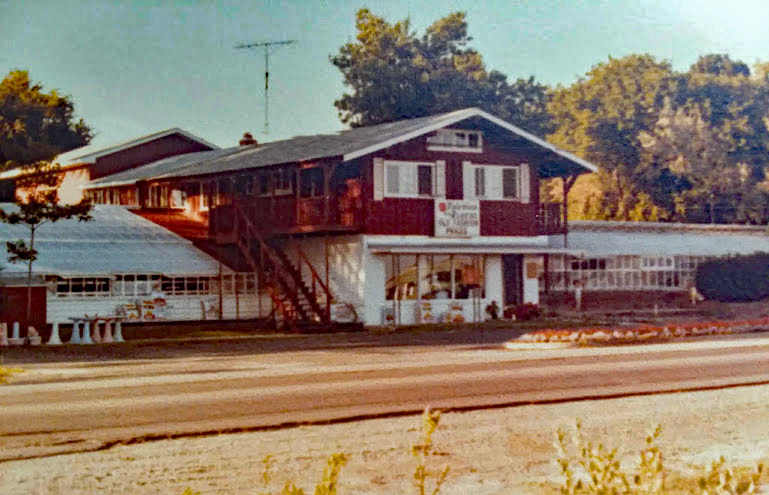







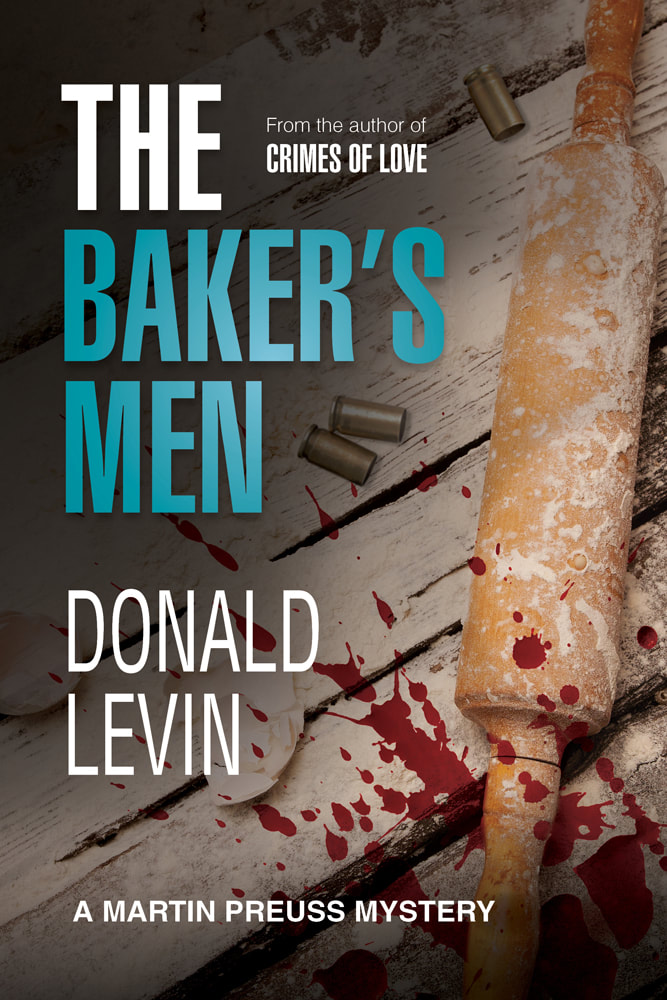
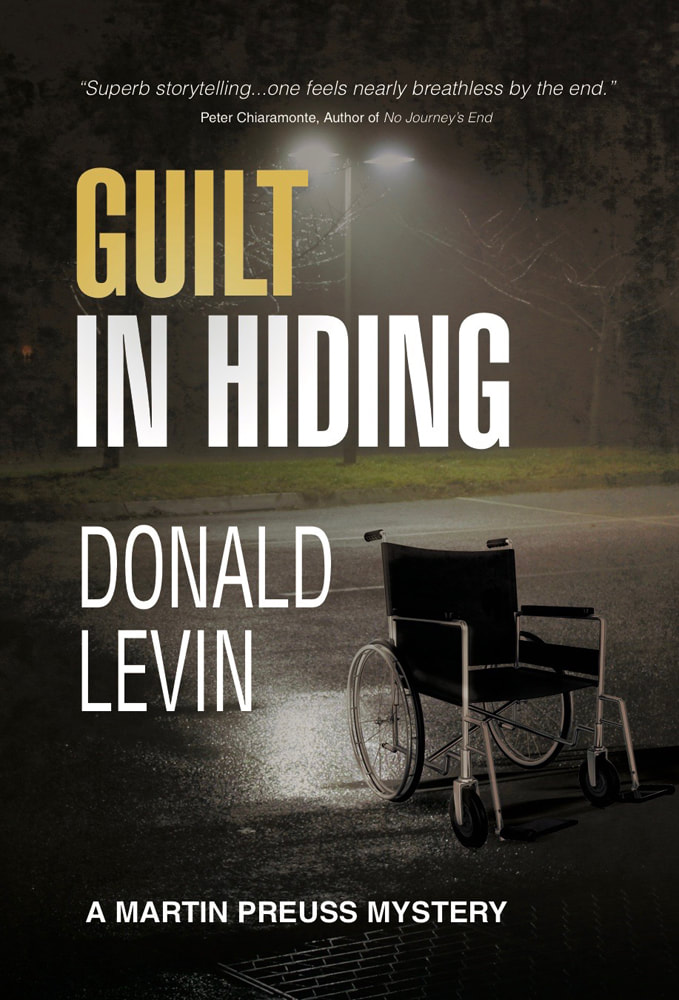












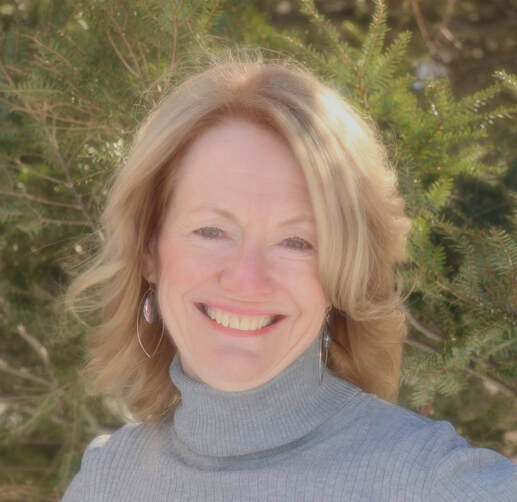




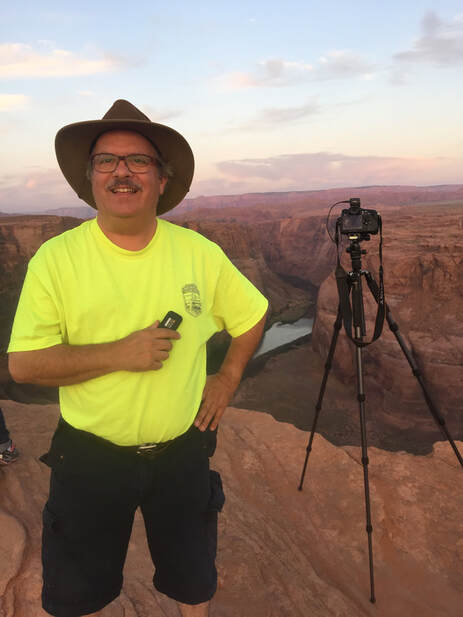








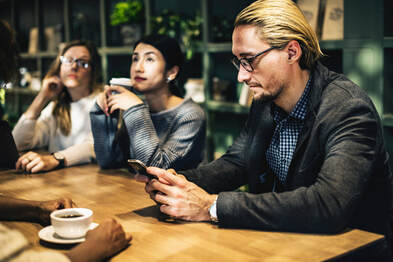
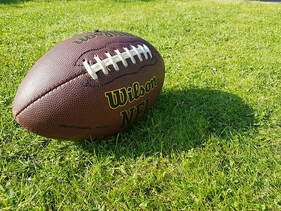



















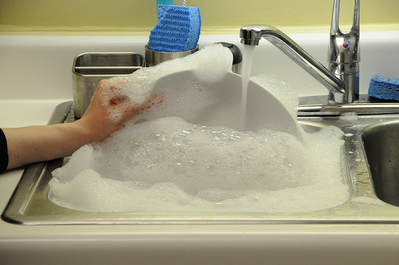


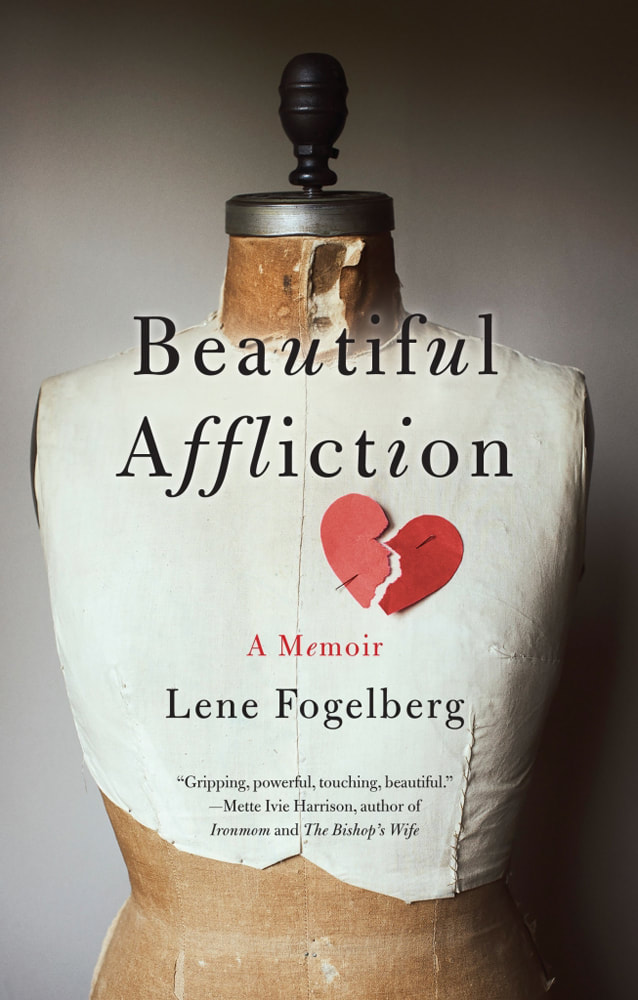

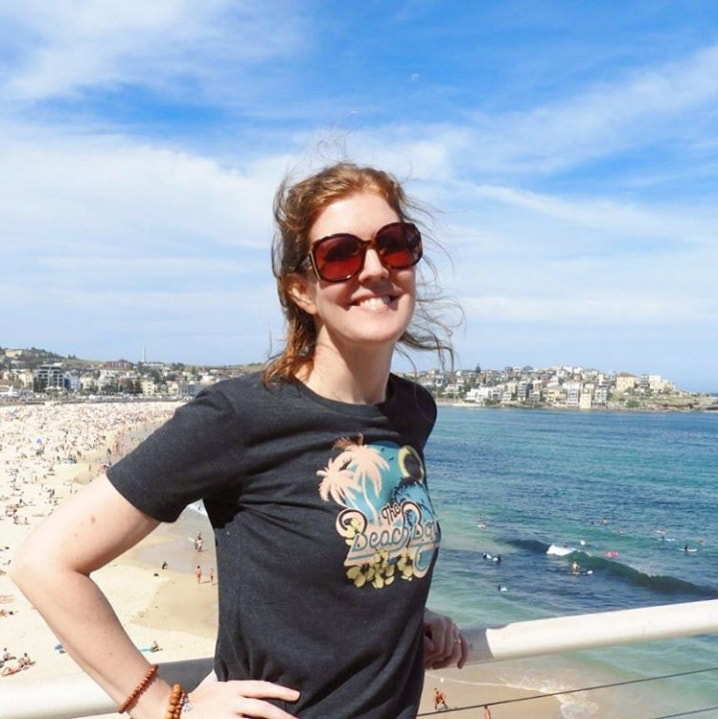

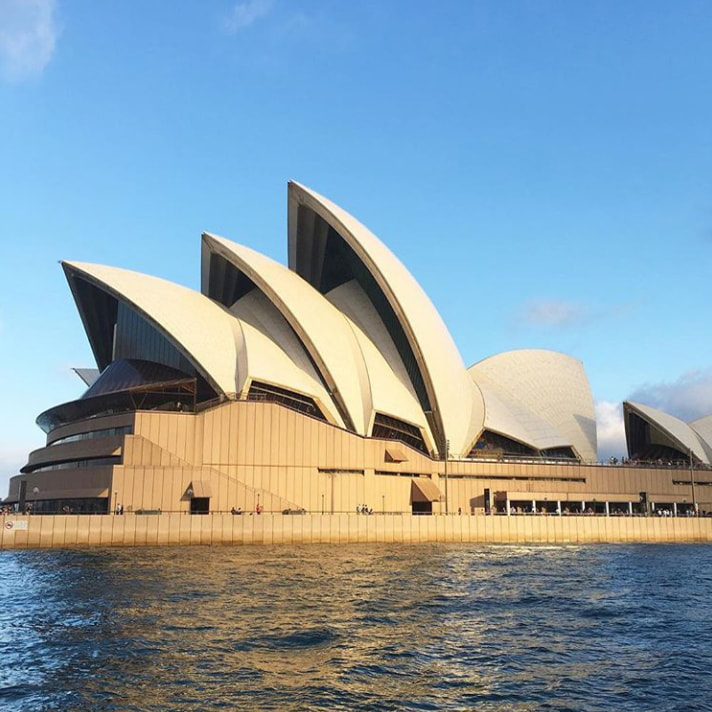


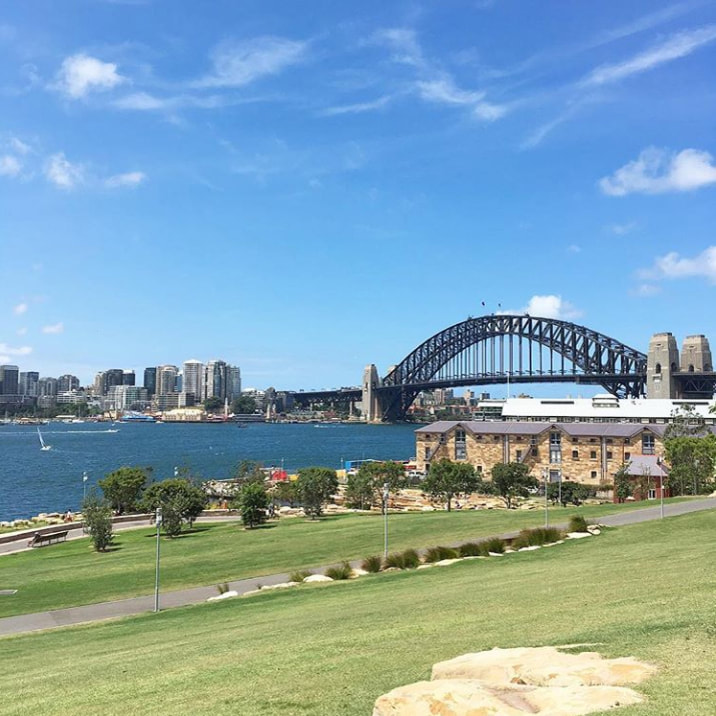







 RSS Feed
RSS Feed